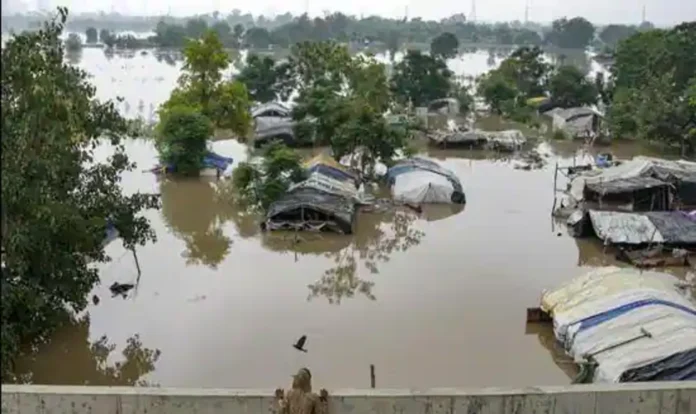In a concerning turn of events, the India Meteorological Department (IMD) has issued a red category warning for several regions in northeast India, including Assam, Meghalaya, Sikkim, as well as Bihar. The warning comes as the IMD predicts extremely heavy rainfall, exceeding 20 cm, in these areas on Wednesday and Thursday. Additionally, Uttarakhand, Uttar Pradesh, and Madhya Pradesh are expected to experience heavy to very heavy rainfall in the next two days. While northwest India may experience a decrease in rainfall activity, the Gangetic Plains are anticipated to continue witnessing heavy rainfall over the next five days.
However, the central and Peninsular regions of India can expect subdued rainfall from July 15 to 16, followed by an increase thereafter. According to scientists at the IMD, the western disturbance responsible for heavy rainfall in Himachal Pradesh has shifted eastward. This shift is likely to result in widespread rainfall across northeast India, Bihar, Uttarakhand, and Uttar Pradesh. However, the forecast regarding the potential development of a low-pressure area over the Bay of Bengal remains uncertain and is expected to become clearer in the coming days. The monsoon trough on the east has shifted northwards, further contributing to the prevailing weather conditions.
Unfortunately, the heavy rains have already claimed the lives of over 40 people, with reports of overflowing rivers causing severe damage to highways, bridges, buildings, and vehicles. Himachal Pradesh, Punjab, and Chandigarh have been particularly hard-hit, with Himachal Pradesh alone accounting for 20 fatalities. This unusual situation can be attributed to a rare convergence of monsoon winds from the south with a western disturbance, resulting in heavy rainfall stretching from Punjab and Rajasthan to the Himalayas. The influx of moisture brought by the monsoon winds has intensified the rainfall and heightened the risk of flooding and other associated hazards.
The authorities in the affected regions have been urged to be prepared for immediate action to prevent further disasters and mitigate the impact of the heavy rainfall. People residing in these areas are advised to stay vigilant, follow safety guidelines, and heed the instructions of local authorities. As the situation unfolds, it is crucial for the authorities, disaster management agencies, and the public to remain alert and responsive to ensure the safety and well-being of the affected regions. The IMD will continue monitoring the weather conditions closely, providing regular updates and forecasts to aid in effective disaster preparedness and response measures.


